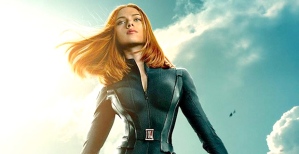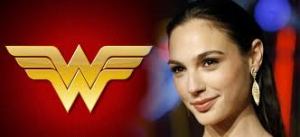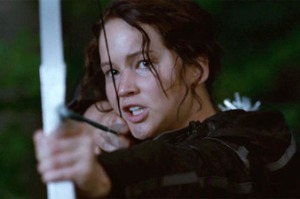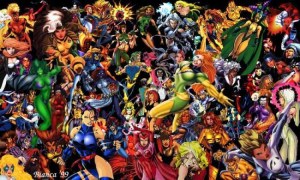If nothing else, at least the Captain America sequel solidified the call for a Black Widow movie. According to Justin Craig at Fox News, Scarlett Johansson “is quickly becoming the smartest, toughest female action star. . . . Forget Captain America 3 or The Avengers 2, it’s time ScarJo gets her very own Marvel franchise.” Slate’s Dana Stevens even thinks Johansson’s “dryly funny Natasha at times comes perilously close to being … a well-developed female character?” That’s high praise in a genre bereft of leading women.
Why are Batman and Superman onto their third film incarnations, while Wonder Wonder still wallows in 70s TV? Presumably Warner Brothers’ hiring of actress Gal Gadot for the Man of Steel sequel will change that, but the company is making no promises for a stand-alone venture. When asked about her own movie prospects, Johansson had to writhe her way around Marvel’s non-commitment: “Sure, we talk about it all the time. You know, I think it’s something that, um, again I think Marvel is is certainly, um, listening, and if, you know, working with them for several years now, you kind of see how, ah, they respond to the audience, um, demand I think for something like that.”
You’d think Marvel and Warner never heard of Jennifer Lawrence or the profits Lionsgate is earning from Hunger Games. Not that Lawrence is the leader of a new trend. Her cartoon counterparts changed gender barriers a decade ago. I’m looking at a 2007 study by Kaysee Baker and Arthur Raney, “Equally Super?: Gender-Role Stereotyping of Superheroes in Children’s Animated Programs.” Even though they’d read one 2004 study that found “no significant differences in aggression between male and female characters,” they still predicted that “Male and female character will be portrayed in significantly different and gender-role stereotypical ways.” They were wrong. Yes, men outnumbered women almost two-to-one, but those men were no longer portrayed as more intelligent, brave, dominant, technical, or task-oriented. And those women were no longer portrayed as more dependent, jealous, romantic, affectionate, sensitive, domestic, damsel-prone, follower-minded, or likely to cry. And both groups “were portrayed as virtually equal in terms of physical aggression.”

If you don’t remember what cartoon superheroes were romping around TV in 2007, I do. My son and daughter had recently grown out of Teen Titans and Justice League, but Cartoon Network was keeping both teams alive in reruns. So, yes, I remember Hawkgirl clubbing the shit out of Martian spacecraft with that mace of hers, and Raven could have dropped the Titan Tower on Robin’s head any time she liked. “One way to interpret these findings,” write Baker and Raney, “would be to proclaim that female superheroes are finally breaking down the gender-based stereotypes that have permeated children’s cartoons for decades.” Instead, the authors spin their findings in the opposite direction: “Adding the masculine trait of aggression to a character who is already portrayed as having traditional feminine traits such as being beautiful, emotional, slim, and attractive, while also losing other more prominent feminine stereotypes (i.e., domesticity, passivity), might suggest that to be heroic, one has to be more masculine, regardless of gender.” Although the authors use the term “masculine” (meaning socially determined) rather than “male” (biologically), I still sense a hint of essentialist nostalgia for those good ole days when men were men and women were, you know, not men. Because if aggression is now gender-neutral, how can being aggressive also be “more masculine”?
However Baker and Raney interpret their data, news of their findings hasn’t revolutionized the culture. There’s a hell of lot more than a hint of essentialist nostalgia in the comments section for a Walking Dead review at the movie blog. When Darren Mooney criticized Tony Kirkman for presenting old school gender attitudes as “unquestioned near-universal truth,” a reader responded: “Seems fairly natural that the group would default to the standard lineup, where men protect the women. In case you haven’t noticed, men are far more aggressive and stronger by nature.”
Don’t tell Gal Gadot. Sure, she looks like a skinny little thing, but after winning Miss Israel in 2004 the next Wonder Woman served two years in the Israel Defense Forces. Israel is one of the few countries that requires military service for both genders—and since a 2000 amendment to the law, that’s meant women having an equal right “to serve in any role in the IDF,” including in combat. The new gender norm has made it across the West Bank border too. The Presidential Guards, the most elite Palestinian military force, currently includes 22 female commandos-in-training. They even look like superheroines since their combat fatigues come with headscarves.
The toy industry is catching on too. The New York Times reported in March: “Toy makers have begun marketing a more aggressive line of playthings and weaponry for girls–inspired by a succession of female warrior heroes like Katniss, the Black Widow of The Avengers, Merida of Brave and now Tris of the book and new movie Divergent–even as the industry clings to every shade of pink.” Actually, the Nerf Rebelle Heartbreaker Exclusive Golden Edge Bow looks purple to me, but it still gets child psychologist Sharon Lamb’s approval: “I don’t see this as making girls more aggressive, but instead as letting girls know that their aggressive impulses are acceptable and they should be able to play them out.”
Meanwhile DC and Marvel, those vanguards of radical feminism, continue to dither over the box office viability of any superhero movie starring a woman. Because, you know, women are, uh, not naturally, um, like that.




